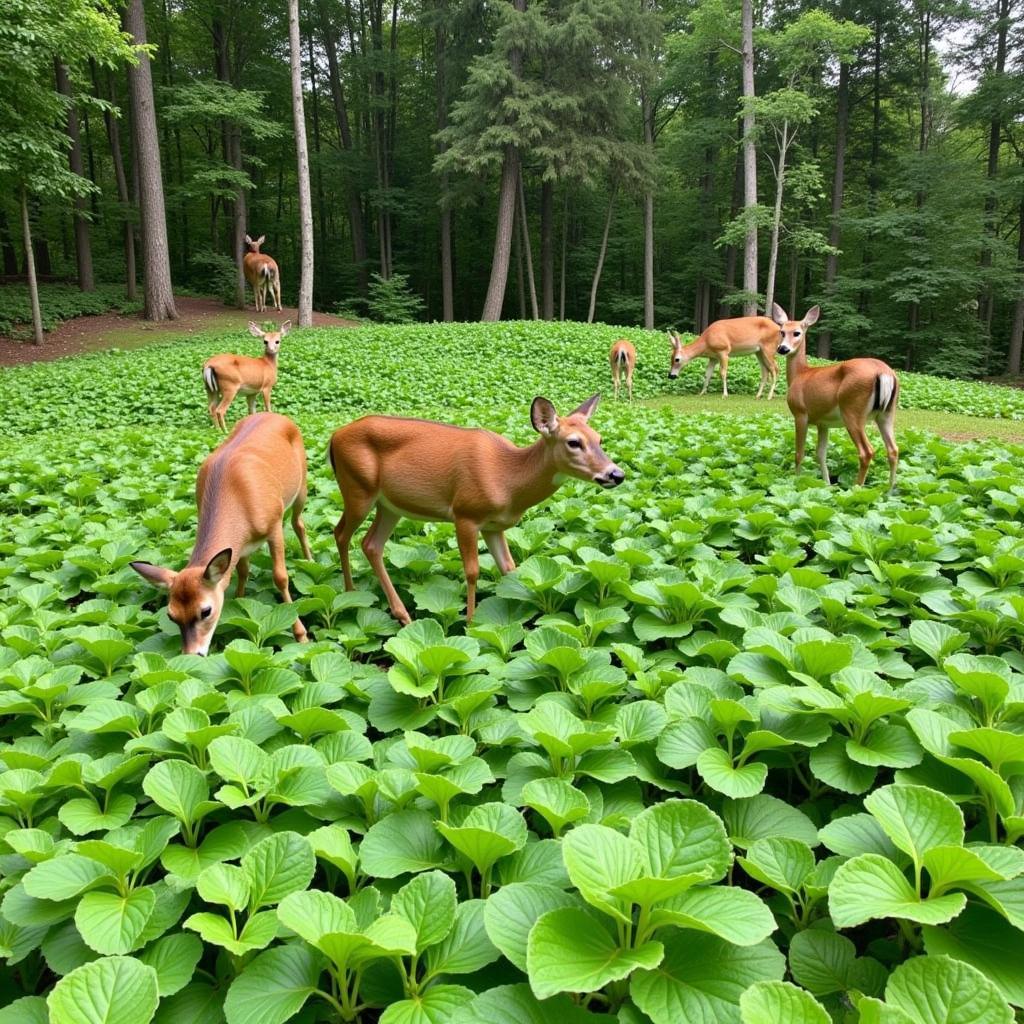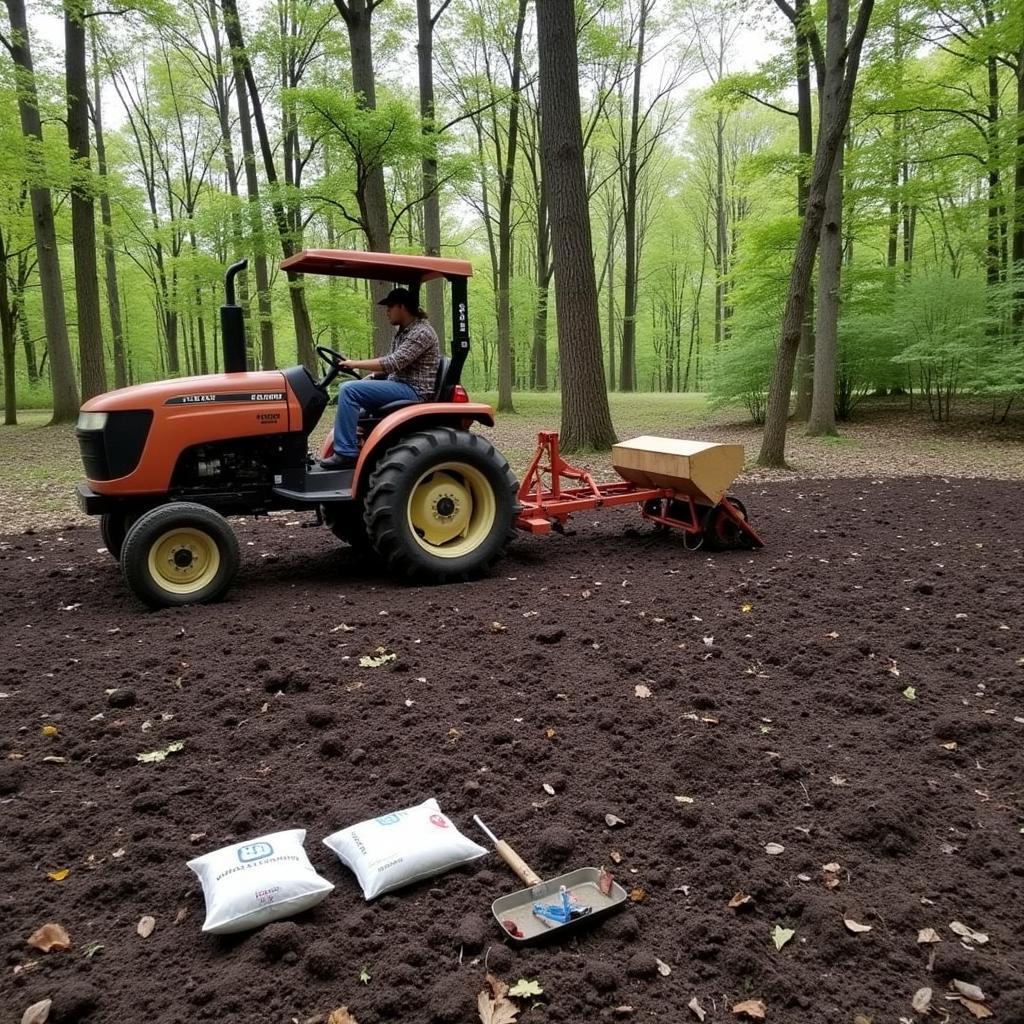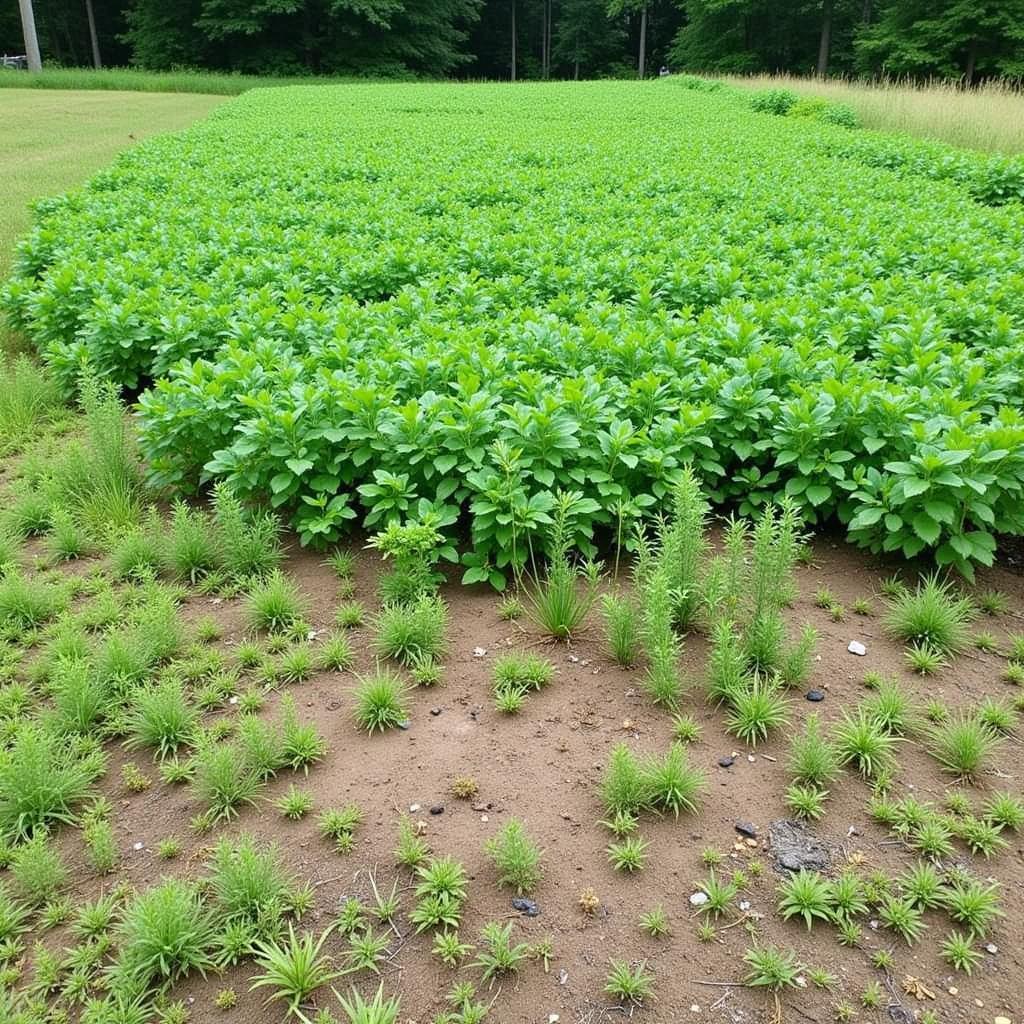Creating the Best Food Plots For Deer is a crucial aspect of successful deer management and hunting. Understanding what, when, and where to plant can significantly impact the health of your local deer population and increase your chances of a successful hunt. This comprehensive guide will delve into the essential elements of establishing and maintaining effective food plots, ensuring a thriving deer herd and an exciting hunting season.
 Deer enjoying a lush food plot
Deer enjoying a lush food plot
Understanding Deer Nutritional Needs
Before diving into specific food plot recommendations, it’s vital to grasp the basics of deer nutrition. Deer require a balanced diet of protein, carbohydrates, and fats, varying with the seasons. During spring and summer, protein-rich plants are essential for antler growth and fawn development. As fall approaches, carbohydrates become increasingly important for energy storage in preparation for winter. Understanding these needs will help you choose the right plants for each stage of the deer’s life cycle. For instance, clover is a great option for spring, providing essential protein. Come fall, consider planting brassicas like turnips or radishes for carbohydrates. What are the best food plots for deer in Michigan? Find out more!
Choosing the Right Location and Preparation
Selecting the ideal spot for your food plot is just as important as what you plant. Consider sunlight exposure, soil type, and water availability. Areas with at least 6 hours of sunlight per day are ideal for most food plot species. Conducting a soil test is crucial to determine the pH level and nutrient deficiencies. Proper soil preparation, including tilling and fertilization, is essential for optimal plant growth. Consider using lime to adjust the pH if needed. Clearing existing vegetation and ensuring good drainage are also important factors in establishing a successful food plot. Want to find the best food plots for deer in MN? Click here.
 Preparing the ground for planting a food plot
Preparing the ground for planting a food plot
Best Seed Options for Deer Food Plots
The choice of seed is paramount for attracting and nourishing deer. Consider a mix of plants to provide a diverse and nutritious food source throughout the year. Perennial clovers, alfalfa, and chicory are excellent choices for providing a long-lasting food source. Annuals like soybeans, corn, and brassicas are also highly attractive to deer. Choosing the right seed blend depends on your specific location and the time of year you’re planting. For the best seeds for deer food plots, look no further! You might also be interested in learning about the best seed for deer food plots.
Warm Season Food Plots
Warm-season plots are planted in spring and summer. They provide essential forage during the warmer months when deer are actively growing and reproducing. Soybeans, cowpeas, and lablab are excellent choices for warm-season food plots. These plants are high in protein and provide excellent nutrition for deer.
Cool Season Food Plots
Cool-season plots are planted in the fall and provide forage throughout the winter months when food sources are scarce. Oats, rye, and winter peas are popular choices for cool-season plots. Brassicas, such as turnips and radishes, are also a great option, offering high carbohydrate content.
Maintaining Your Food Plot
Maintaining your food plot is crucial for its long-term success. Regular weeding and fertilization are necessary to ensure healthy plant growth. Controlling pests and diseases is also important. Monitoring the deer activity in your food plot can help you determine its effectiveness and adjust your strategy accordingly. What are the best spring food plots for deer? Find out here.
 Thriving Deer Food Plot
Thriving Deer Food Plot
Conclusion
Establishing and maintaining the best food plots for deer requires careful planning, implementation, and ongoing maintenance. By understanding deer nutritional needs, selecting the right location and seed, and implementing proper maintenance practices, you can create a thriving food plot that attracts and nourishes deer, contributing to a healthy deer herd and increasing your chances of a successful hunt. Remember, investing in your food plot is an investment in the future of your hunting experience.
FAQs
- What is the best time to plant food plots for deer? The optimal planting time varies depending on the plant species and your geographical location. Consult local resources and seed planting guides for specific recommendations.
- How big should a deer food plot be? The size of your food plot depends on your available land and the deer population density. Smaller plots can be effective in areas with limited space.
- What are the best food plot attractants? A variety of commercial attractants are available, but natural food sources like fruits, nuts, and minerals are often just as effective.
- How often should I fertilize my food plot? Soil testing is essential to determine the appropriate fertilization schedule. Generally, fertilizing once or twice a year is sufficient.
- How can I protect my food plot from weeds? Regular weeding and the use of appropriate herbicides can help control weed growth.
- What are some common mistakes to avoid when creating food plots? Common mistakes include poor site selection, inadequate soil preparation, and choosing the wrong seed mix.
- How can I learn more about food plot management? Numerous resources, including online guides and local agricultural extension offices, offer valuable information on food plot management.
For further assistance, please contact us at Phone Number: 02437655121, Email: minacones@gmail.com or visit our address: 3PGH+8R9, ĐT70A, thôn Trung, Bắc Từ Liêm, Hà Nội, Việt Nam. We have a 24/7 customer service team.